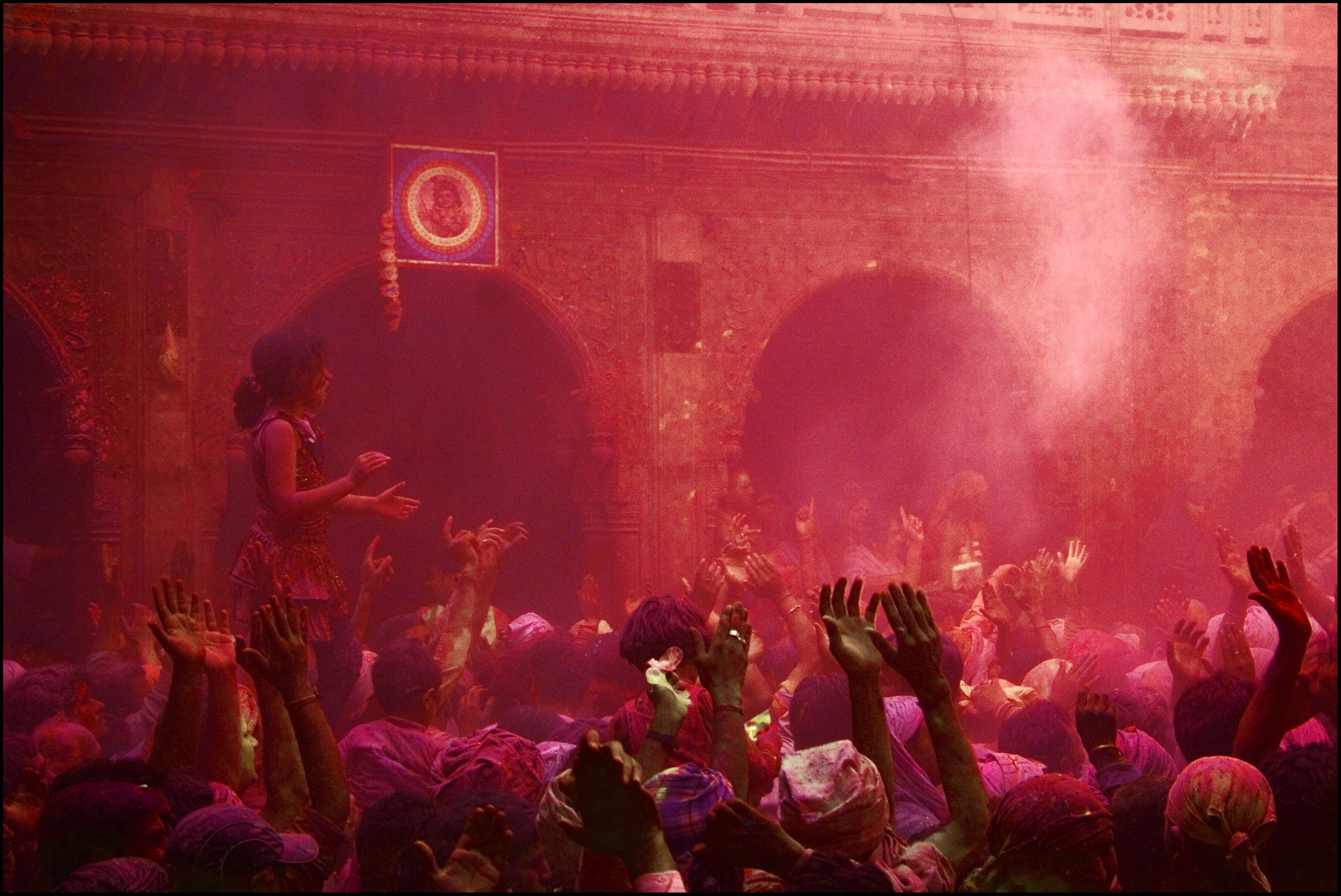Matangi Jayanti is celebrated every year on the shukla paksha Tritiya, of Vaisakha month. Ma Bhagwati is worshiped on this day with a special puja. Ma Bhagwati is often called as ‘Tantric Saraswati, one of the nine significant Mahavidyas. She is revered for the art of magic, prominently called ‘Tantric Vidya’. According to Hindu traditional calendar, Matangi Jayanti falls on the day of Akshaya Tritiya, the day on which Parshuram Jayanti is also observed.
Matangi Jayanti
Dasa Mahavidyas are the ten manifestations of Ma Kali. The ten manifestations represent the stages of spiritual evolution of any individual, starting with the worship of Ma kali and culminating with complete evolution of the individual, with Ma Kamala. The ten manifestations are Kali, Tara, Tripura Sundari, Bhuvaneshwari, Chhinnamasta, Bhairavi, Dhumavati, Bagalamukhi, Matangi and Kamala. Matangi is a Hindu divine protector, the ninth of the ten Mahavidyas, known as the tantric Saraswati. She governs music, speech, arts and knowledge. Her veneration is for gaining supernatural powers, especially to fight against enemies, achieving mastery over arts, gaining knowledge and wisdom. Matangi Jayanti is observed on the third day of Shukla paksha, of the Vaisakha month, of the Hindu Lunisolar calendar. As per the Gregorian calendar, it falls in the month of April. She is popularly known as, ‘Uchchhishta Chandalini’ or ‘Uchchhishta Mantangini’. A sadhak who has attained Ma Matangi siddhi, progresses to Yakshini sadhana and can get all desires fulfilled. She is often offered the left over or partially eaten food, with unwashed hands, which is otherwise considered immoral, in Hindu culture. The Ucchishta Matangini form carries a knot, sword, goad and club, while the form of Raj Matangini, is pictured with parrot and plays veena. Matangi Devi is a red complexioned Sumukhi Devi, of kali tradition, and is also the dark-complexioned Raja Syamala, of the Sri Vidya tradition. She generally wears red footwear and mala of red coloured gunja seeds. She can be seen holding a bow, shell-fish, canopy, trident and aksh mala, in her hands.
ORIGIN AND SIGNIFICANCE:
As described in Shakta Maha Bhagavata Purana, once, Sati, wife of Shiva, and daughter of king Daksha, was insulted by not being invited for a yagna organized by her own father. Bhagwan Shiva stopped her, but she continuously insisted on attending the ceremony. Sati became very angry and transformed herself into Maha vidyas, of which, the ninth devi was Matangini. As per Bhagavata Purana, Devi Matangini was one of the forms of Ma Shakambari, and accompanied her in many of her wars.
Uchchishta Matangini: Once Bhagwan Vishnu and Lakshmi ji went to meet Shivji and Parvati ji at kailasha. When they were served food, some of it fell on the ground, and a Devi appeared. She asked all the divinities to give her some leftovers of their food. As it was first eaten by Bhagwan, it was already sacred, and so, the leftover was called Uchchishta, a negative energy that turned into prasad. Shivji said that whosoever did her worship, will be blessed with several boons and all wishes would be fulfilled.
Significance:
Matangi Devi is considered equivalent to the vedic Goddess, Ma Saraswati. Ma Matangi plays a very important role in spiritual evolution of an individual, more so, in Kundalini awakening. While practicing Kundalini Yoga, Ma Matangi mantra is chanted, to activate and awaken the Vishuddha chakra. Devi Matangini relieves all troubles in life. A person who chants ‘Kreem Hreem Matangi Hreem Kreem Swaha’, gets all the pleasures in life. Matangi Jayanti is celebrated to get protection from natural calamities. It is said that if someone is devoid of mother’s love, worshiping Ma Matangi fills the void. Matangi Devi is a form of Baghwan Shiva. She wears a moon shaped white tikka on her forehead, with her arms spread in four directions. She is therefore called ‘Vagdevi’. Matangi Jayanti is celebrated by serving bhog prasad to young girls. People going through the ill effects of planet Sun, or Maha dasha of Sun, should perform ‘Vamtanta Dusmahavidya puja’ and ‘Tantric Ma Matangini Puja’, to curb the evils of Surya Dosha. She is associated with Sammohan and Vashikaran vidyas. She shields her devotees and sadhaks from evil eye, black magic and negative energies.
CUSTOMS, TRADITIONS AND RITUALS:
On the day of Matangi Jayanti, a grand puja is performed by vamtantra sadhaks of Ma Matangini. Murti of Devi is placed on the shrine of worship, and rituals are started after igniting the diya. Special food or bhog prasadi prepared by devotees, is offered to Matangini Devi, along with coconut and kadamba flowers.
Daan or donation is a very significant part of the rituals on Matangi Jayanti. Vamtantra sadhaks organize bhandara which is very pious and divine. Food and clothes donation is considered important on these days, and also helps in overcoming the ill-effects of surya Dasha.
A taboo that is broken in Matangini Devi worship, is offering of stained clothes of women, to attract a mate. In some communities, clothes of dead people, animal meat, fish and other polluted articles are kept at crossroads, as an offering. No fast or vrat is observed for Matangi Jayanti.
PUJA VIDHI AND KATHA:
Puja is performed in the morning or during the pradosh period or at midnight. The Mool virat of Matangini Devi is placed on a turquoise blue cloth.
Vidhi of performing Mahavidya Mata Matangi Puja:
- Guru Vandana
- Guru Puja
- Gau Puja
- Abhishek
- Pushpa Arpan
- Alankaram
- Ganpathy puja
- Navagraha puja
- Aavahan homam
- Chanting Maa Matangi Moola Mantra
- Samput path
- Maha Poojan
- Purnahuti
- Deep daan
- Prasad
- Ignite the ghee lamp with one wick only.
- Dhoop with fragrant flowers is offered and blue colour flowers are offered.
Ma Matangi Mool Mantra: ‘Hreem kleem hoom MatangayePhat Swaha’
Different offerings to Mata and using the purified offering, help in different ways.
Almonds: Consuming almonds offered to Mata, helps in recovering from bad health.
Black and blue thread: Wearing thread offered to Mata protects from conflicts.
Pen and pencil: Using stationery offered to Mata helps in performing well in examinations.
Kajal: Applying Kajal offered to Mata, helps in overcoming problems in relationships and love.
Katha:
According to ancient scriptures, Parvati once went to her father’s house to spend some time with her family, leaving Shiva alone in Kailasha. Shiva, unable to bear the separation, went to meet Parvati, in disguise of a jewellery seller, and asked for sexual favours in return of bangles that Parvati bought from him. This angered Parvati, who was just about to curse the jeweller, when she realized that he was none other than Shiva himself. She agreed to complete the act when the time is right. Shiva went back to kailasha and waited for Parvati to return. Parvati came back, disguised as Chandali, in a red saree. Shiva recognized her and made love to her. He also said that she will be worshiped as Uchchishta Chandalini, even before Shiva himself.
According to Brahmalaya, there was a saint named Matanga, who did a lot of expeditions and hardships in the Kandab jungle. Due to strict penance and devotion, Devi Tripura got pleased with him, and a vibrant radiation emitted from her eyes, and took the form of a woman. She is regarded as the daughter of saint Matanga and recognised by the name of Raj Matangini.
CELEBRATION ACROSS THE COUNTRY:
Matangini, along with other Mahavidyas, finds place in the Kamakhya temple, the most important place for Tantra puja. Meenakshi Devi of Madurai temple, is also one of the Raj Matangini, with a parrot in hand. The Modh community of Gujarat, worship her as Modeshwari Devi, a form of Maa Durga, sitting on a lion. The Rachrappachinamasta temple also houses a shrine of Matangini Devi. There are several temples in south India, where Matangini Devi is worshipped as Shyamala or mantrini (Mistress of sacred mantras), in Srikula tradition.
BENEFITS OF CELEBRATING MATANGI JAYANTI:
Worshipping Ma Matangini on Matangi Jayanti, helps in becoming fearless and victorious. It brings good fortune, wealth and health, and provides shielding against evil eye, black magic and negative energies.



